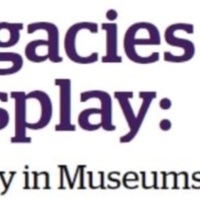
House of Negritude and Human Rights
The House of Negritude and Human Rights opened in 1971 in the former Champagney town hall. It relocated to its present site in 1995. The museum was founded after local historian René Simonin discovered a document in the Haute-Saône departmental archives. This document is known as 'Article 29' of the Champagney Register of Grievances. In 1789, the inhabitants of Champagney, drew up their list of grievances at the request of King Louis XVI. This document would be used to prepare the meeting of the Estates General that would open the process of the French Revolution. 'Article 29' was a one-of-a-kind request to abolish black slavery on humanitarian grounds.
The museum is a tribute to the "Champagnerots" (people of Champagney) who made this extraordinary request. Text interpretation explores the context of the request, examining the french slave trade and the movement for abolition in other European countries in the nineteenth century. There are artefacts that highlight the terrible conditions faced by the enslaved, including a replica slave ship and items recovered from plantations in Haiti.
The interpretation also goes on to examine other forms of slavery in the contemporary world. This is embedded into the museum's popular education programmes that reflect on the development and importance of human rights around the world.